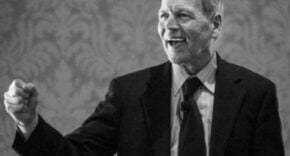
Bars and restaurants led hiring in March
The jobs boom in the US slowed last month but the unemployment rate remained low, as the world’s largest economy remained resilient in the face of sharply higher borrowing costs.
Employers added 236,000 jobs in March, the Labor Department said, fewer than in February but close to expectations.
At 3.5%, the jobless rate remained near historic lows.
The data is being closely watched as the US central bank raises interest rates to stabilise soaring prices.
Raising rates makes borrowing more expensive. It means businesses borrow less, making them less likely to create jobs or even cut staff.
However, the US labour market has defied expectations of a slowdown so far.
Employers have added more than 330,000 jobs monthly on average over the last six months and job openings have outstripped the workers available.
Analysts said the latest report from the US Labor Department suggested conditions may be starting to change, noting job declines in the construction, manufacturing and retail sectors.
The increase in wages also eased, with average hourly earnings rising by 4.2% over the year to March. This is below the 4.6% increase in February and the lowest since mid-2021.
“Overall, while the headline gain was a little stronger than we had expected, it’s still the smallest monthly gain since December 2020,” said Andrew Hunter, deputy chief US economist for Capital Economics.
Big companies including consultancy Accenture, entertainment giant Disney and fast food chain McDonalds have announced job cuts in recent weeks.
But bars, restaurants, schools and hospitals have continued to add workers, raising hopes that the economy will slow and inflation subside without a painful recession.
US inflation, the rate at which prices rise, hit 6% in February.
That has fallen from more than 9% last June, but remains far higher than the Federal Reserve’s 2% target.
The Federal Reserve, along with many other central banks around the world, has been lifting interest rates to cool the rate of price rises.
Since March last year, the bank has raised interest rates nine times, including last month when the US banking sector was hit by its two biggest failures since the global financial crisis in 2008.
Ian Shepherdson, chief economist at Pantheon Macroeconomics, said the March jobs report was the “calm before the slump”.
He said hiring was likely to fall sharply as bank lending slows following the collapse of Silicon Valley Bank (SVB) and Signature Bank.
“The March data effectively are a look back into the pre-SVB world,” he said. “But the hit from tighter credit conditions is coming …. We expect unemployment to rise markedly across the remainder of this year.”
Jerome Powell, chairman of the Federal Reserve, has faced increasing pressure from some politicians who say the bank is taking steps that could force companies to make major job cuts.
Commenting on last month’s increase, Mr Powell pointed to the strong jobs market and said he remained hopeful that officials could achieve a so-called soft landing. This means an economy avoids a recession or if there is a slowdown, it will be short-lived.
“I think that pathway still exists and, you know, we’re certainly trying to find it,” he said.









